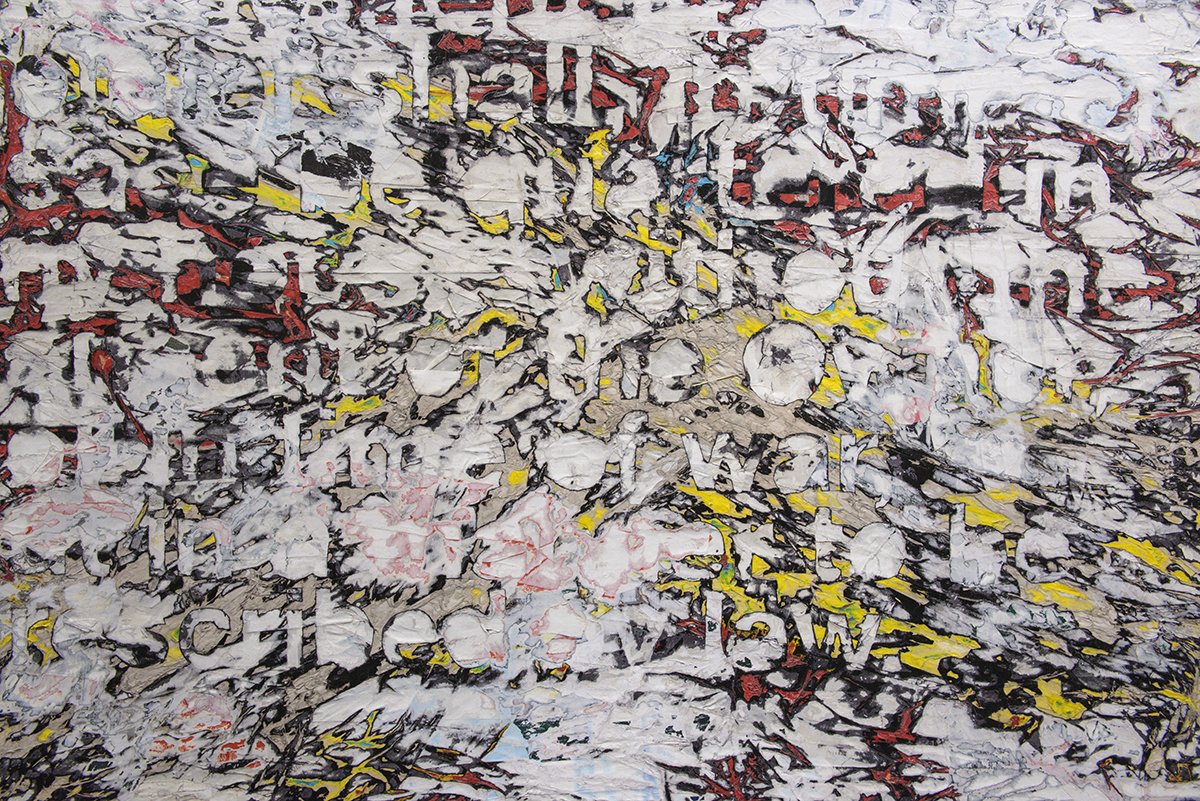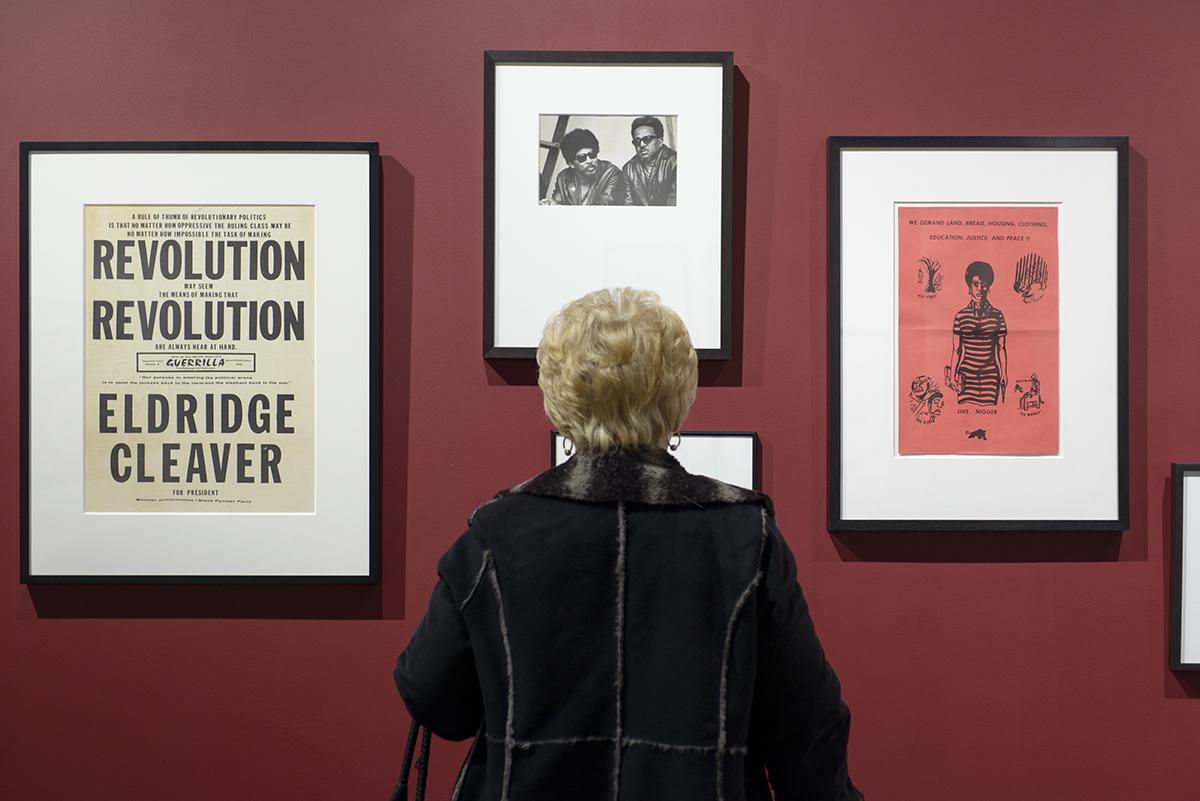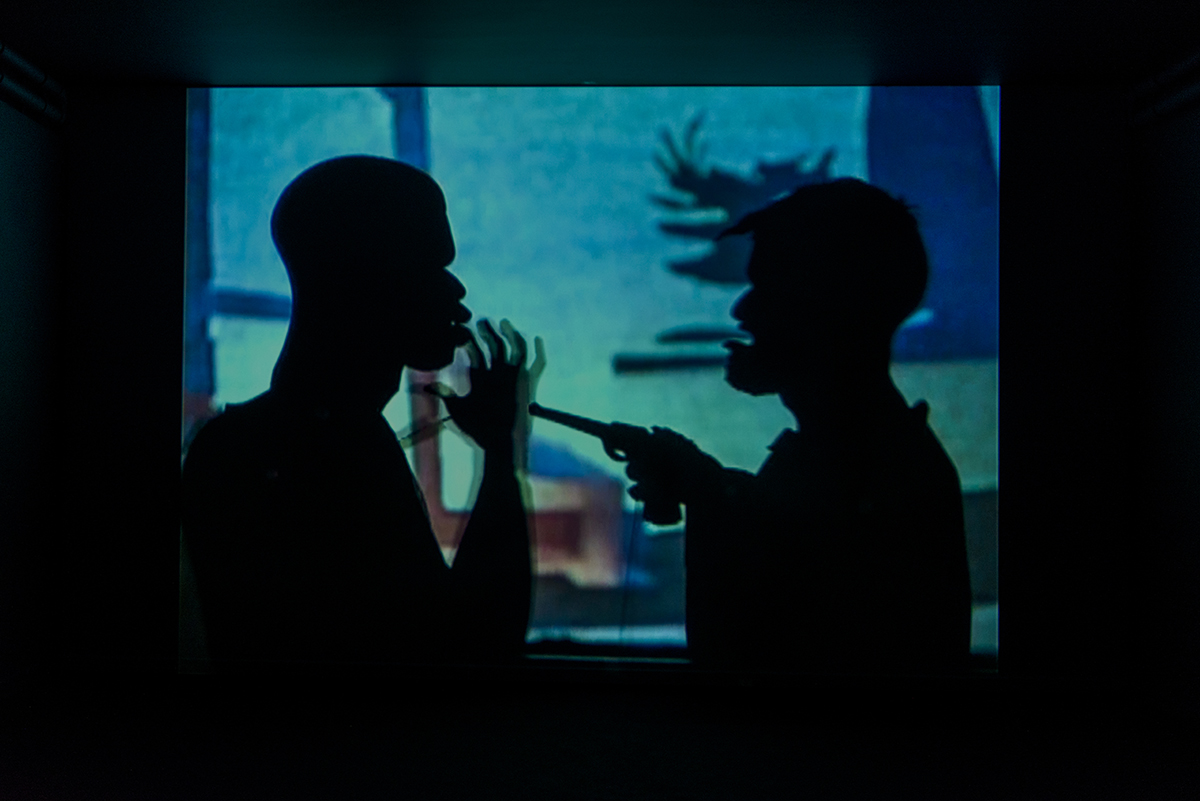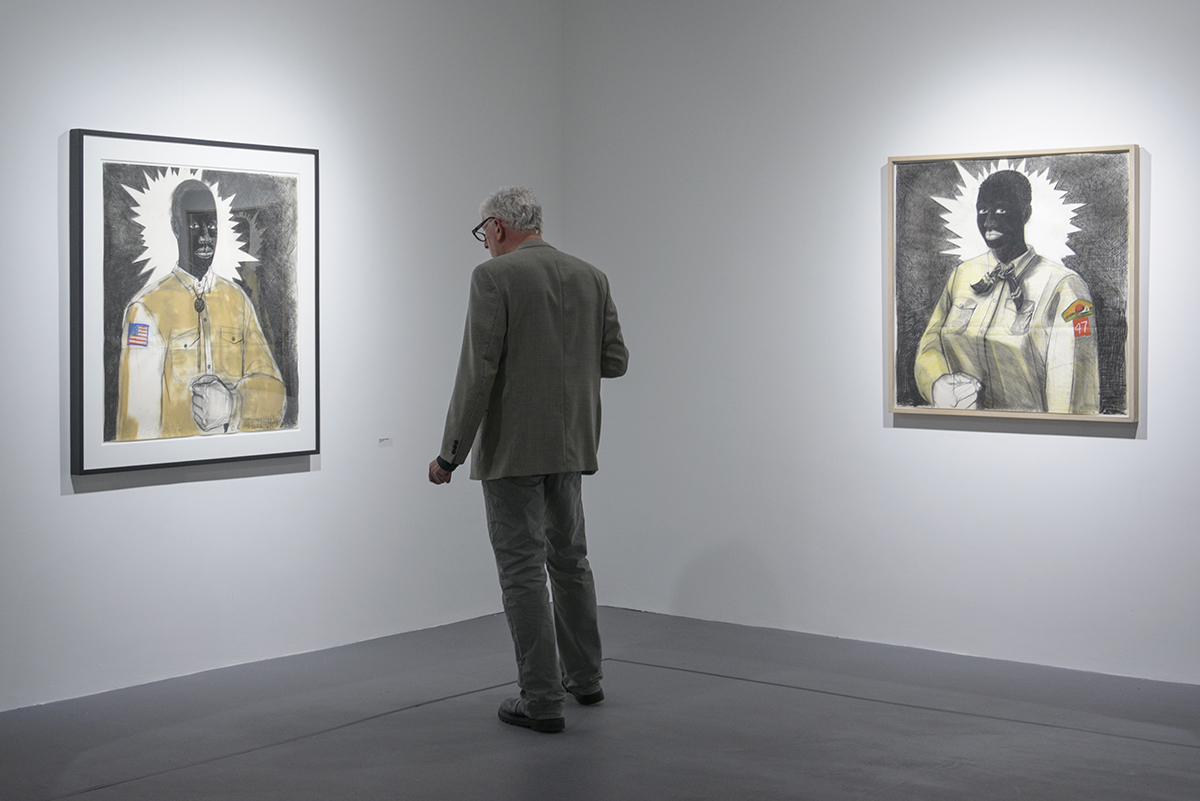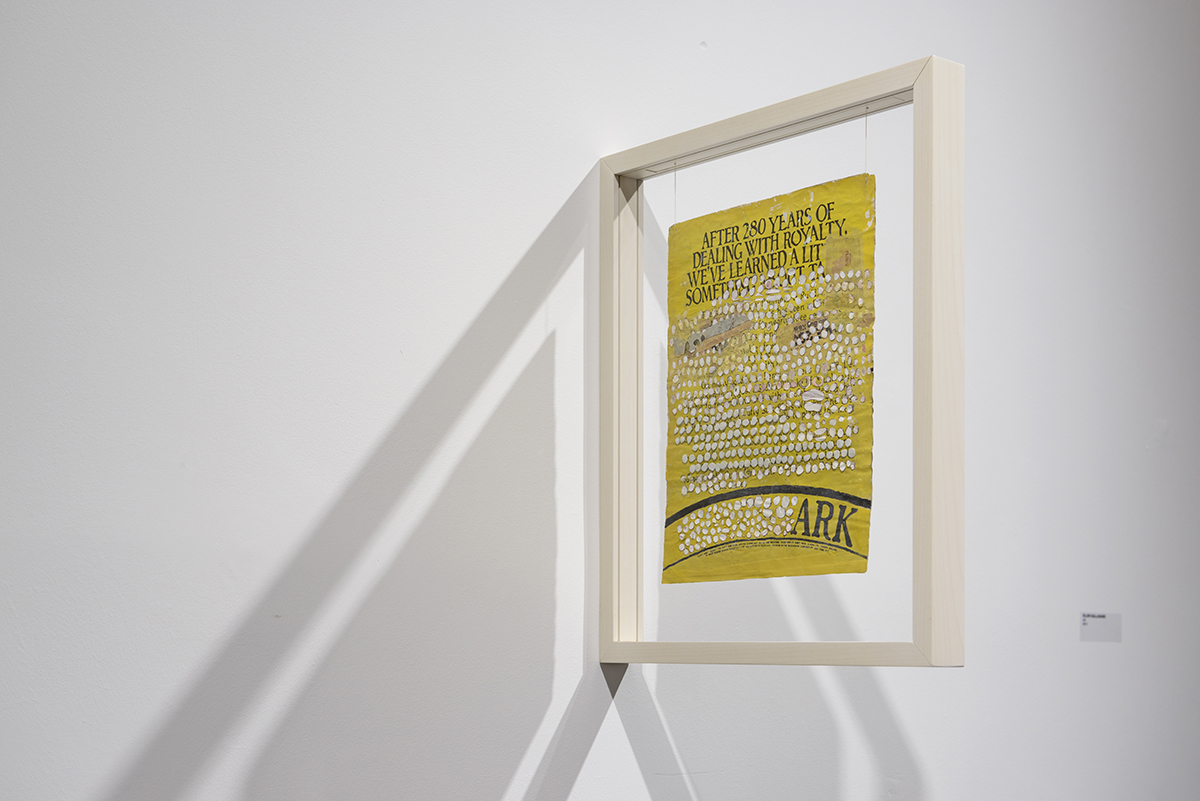Void is pleased to present a group exhibition Civil Rights – We have it in our power to begin the world over again curated by Lynette Yiadom Boakye and Maolíosa Boyle.
The title is a quote by the political activist and theorist Thomas Paine who believed in the possibilities of change and the ultimate power of people. The concept for the exhibition originated in a conversation in October 2013 while Maolíosa Boyle was curating Lynette’s Yiadom Boakye’s work as part of The Turner Prize. Both women are interested in the confluence of their social and political histories and how this is referenced within contemporary art.
The exhibition looks at the Black Civil Rights movement through historical photographs, documents and contemporary art and explores how it impacted on Civil Rights in Derry and N. Ireland. It traces the convergent histories of both places in the struggle for change and the equality of citizenship, and highlights how issues of civil and human rights continue to be present concerns.
In Derry on 5 October 1968 nationalists, unionists, republicans, trade unionists, students and activists joined together to march for basic rights for all citizens. Images that emerged from the march were broadcast all over the world and the Northern Ireland Civil Rights movement became global news.
Research for the exhibition at Void led the curators to New York to discuss the concept of the show with a number of African American artists they were keen to work with. The response was overwhelming and has resulted in an incredible body of work with artists Kara Walker, Lorna Simpson, Ellen Gallagher, Glenn Ligon, Adam Pendleton, Kerry James Marshall, Mark Bradford, Radcliffe Bailey and Hank Willis Thomas.
The exhibition is also the first collaboration between New York galleries; Jack Shainman, Luhring Augustine, Pace, Hauser and Wirth, Sikkema Jenkins and Salon 94. It has created incredible synergy and new possibilities for the future between all involved and Void.
As part of the exhibition the artist Rashid Johnson has kindly loaned Void his entire collection of Black Panther newspapers. Jack Shainman Gallery has also kindly loaned Void a private collection that was the passion of Claude Simard co-founder of the gallery. Claude sadly passed away in June 2014 and Jack decided that the Black Panther collection should be loaned to Void to be part of Civil Rights – We have it in our power to begin the world again. The collection includes work by Emory Douglas, William Werrbach and Flip Schulke.
Ellen Gallagher
Ark (2014)
Ark, a double-sided paper construction made up of layered magazine pages, which are glued together to form a dense accumulation of sealed pages. One side is painted over in heavy white gouache and the printed pages underneath bleed through to produce an uneven pinkish tone. The other side originates in an advertisement for Cutty Sark whisky. Using a scalpel, Gallagher removes small paper forms, before turning them back-to-front and re-inserting them into the absent spaces. The configuration of the painted side depends on the amnesia of its opposite side, with the effect that both sides of the work are interdependent – coactively making and unmaking each other.
Mark Bradford
Amendment#3 (2014)
Known for his expansive multi-layered collaged paintings incorporating materials found in the urban environment, Mark Bradford’s work addresses spontaneous systems and networks that materialise within cities, such as alternative economic exchange, itinerant communities, and other socio-political pathways.
Visually complex and often cartographic in form, Bradford’s paintings incorporate elements of the everyday – from end papers used for perming hair (associated with his background in hairdressing) to remnants of billboard posters, polyester cord, caulking, bleaching agents and carbon paper. Using such materials gathered within the locale of his studio in South Central Los Angeles, Bradford’s paintings are ostensibly abstract in a formal sense, but referential in content.
Amendments #5-10 cite the amendments to the US Constitution that were collectively known as the Bill of Rights. In the first of these paintings, text from the revisions, outlining the rights of the people against abuse by government authority, are distinctly visible across a background of expressive, gestural swathes of colour. As the series unfolds, the quotations become more illegible, with only momentary glimpses of text materialising from within the formal abstract composition. Bradford is interested in how the amendments are continually subverted and summoned in ways to control, categorise, divide and restrict people, to the point where the meaning is manipulated and abstracted far beyond its original intent.
Glenn Ligon
I Am a Man/Condition Report (1998)
This diptych print is based on the artist’s first exclusively-text painting from 1988, Untitled (I Am A Man) (Private collection). The left panel is a straightforward print of the 1988 painting while the right panel is a print that includes the overlay annotations of painting conservator Michael Duffy.
Ligon’s original 1988 painting is a reproduction of the protest placards carried by sanitation workers in Memphis, Tennessee in the spring of 1968. His canvas shares the verticality and dimensions of the striker’s placard, with a background painted in white oil paint on top of which the phrase ‘I AM A MAN’ is executed in black enamel block letters. Displaying these very few words en masse, the men vividly drew attention to the city’s long-term abuse and neglect of black employees following the deaths of two colleagues in the strike that preceded the assassination of the civil rights leader Martin Luther King Jr (1929–1968). The strong, plain language and the strikers’ insistence on visibility were emblematic of the non-violent resistance engaged throughout the Civil Rights Movement. Ligon recalled seeing Ernest C. Wethers’s iconic photograph of the Memphis sanitation workers in congressman Charles Rangel’s office while working as an intern at the Studio Museum in Harlem, New York in the early 1980s.
What was two decades earlier a rallying cry for civil protest became a breakthrough statement for Ligon, who at that time had begun to experiment with writing over the top of his abstract-expressionist canvases.
The left panel of Condition Report reproduces the scaled-down painting as an object. On the surface of the right panel, and equally distributed around its margins, Duffy’s notes point to a history of smudges, hairline cracks, fingerprints, threads of canvas and stray paintbrush hairs. Squiggles, hashes, dots and other neat symbols indicate the grain or pattern of various imperfections in the painting due to age and wear. By submitting his work to this procedural analysis, Ligon emphasises the degradation not only of the material components, but also the subject matter, through reproduction and prolonged exposure. He has described how the process of making Condition Report served as a temperature gauge for the cultural moment, in relation to his ongoing concerns as an artist, it’s a return to my own production, but in the case of those prints that came out of the condition report, it was about detailing not only the physical aging of the painting over time – all the cracks and paint loss and all of that – but also changing ideas about masculinity, changing ideas about the relationship we have to the Civil Rights Movement.
Hank Willis Thomas
Thence forward and Forever Free (2012)
This is an enlarged replica of a mid-19th century abolitionist lapel pin toting a photograph encircled by delicately wrought alloy metal known to be one of the very first political buttons to incorporate a photograph. Thomas is able to resurrect the object’s history and re-charge its agency to reflect a characteristically American means of both political advertising and personal expression.
Now That’s Funny (2008)
Hank Willis Thomas main interests are race advertising and popular culture. His use of archival material charts a history of the appropriation of the black figure in popular culture. For now that’s funny he has appropriated two advertisements and put them together to create an ironic take on racism within advertising.
Freedom Ride (2012)
This painting takes the original logo used to represent and promote the Freedom Riders. Freedom Riders were civil rights activists who rode interstate buses into the segregated southern United States in 1961 and following years to challenge the non-enforcement of the United States Supreme Court decisions Irene Morgan v. Commonwealth of Virginia (1946) and Boynton v. Virginia (1960),which ruled that segregated public buses were unconstitutional.
Invisible Man (2013)
Viewers have to look at just the right angle down a long, thick piece of Plexiglas to spy Hank Willis Thomas’ minstrel, a photo of a man painted half black and half white, then literally doubled by the material. Like similar characters photographed by the artist, a seemingly clear cover obstructs a clear view, a metaphor for how perceptions of race can obscure identity.
Puzzle (2014)
Hank Willis Thomas main interests are race advertising and popular culture. He has appropriated two photographic images on puzzles together to create a new narrative.
Lorna Simpson
Double Portrait (2013)
This is a silkscreen print on felt panel, which overall measures 34-1/2” X 40”, is a continuation of the artist’s recent collage series based on advertisements found in Ebony and Jet magazines from the 1930s through 1970s. Simpson regards these publications as important archives of American life. Documenting the rise of an aspirational black society and a burgeoning middle class. In the work, the portraits of two women taken from an Ebony advertisement are printed as a silkscreen on panels of felt, and make reference to the before and after shots found within many magazines of the time. In the ad, the women act out two versions of emotional state, much in the way that performers bring characters to life every night on Lincoln Center stages. Double Portrait is the first work from Simpson’s current collage series to be printed on felt, a material which the artist has experimented with since the mid-1990s. Working with master printer Luther Davis of Axelle Editions, Simpson has created a silkscreen print which resembles a watercolor, collage and print, all on starched and pressed felt.
Black Panther collection
courtesy of Jack Shainman Gallery
Jack Shainman Gallery has kindly loaned Void a private collection that was the passion of Claude Simard co-founder of the gallery. Claude sadly passed away in June 2014 and Jack decided that the Black Panther collection should be loaned to Void to be part of Civil Rights – We have it in our power to begin the world again. The collection includes work by Emory Douglas, William Werrbach and Flip Schulke.
Black Panther newspapers
loan from Rashid Johnson and Sheree Hovsepian.
46 issues in tabloid format (ca. 29 X 44.5 cm), printed in colors on newsprint, of the Black Panther Party weekly newspaper with editorials focusing on police brutality, violence as self-defense, economics as a form of oppression, and Black American genocide perpetrated by the government, most issues featuring full-sized color artwork by Emory Douglas, the Black Panther Minister of Culture from 1967 until the party disbanded in the 1980s. Majority of issues with mild toning, light creasing and edge wear, occasional spotting, and horizontal folds at center, most of which have long since smoothed out. A few issues with minor soiling and multiple folds, as well as printed addresses. Berkeley and Oakland: Black Panther Party, 1968-1974.
Adam Pendleton
Independence (2014)
The experimentation of language and image lies at the centre of Adam Pendleton’s works. His works are filled with ideas about language, history, race, and politics that speak to the increasingly complex conversions of these elements in American culture. He uses historical photographs and films—often politically or racially charged—and manipulates them by adding text or narration, thereby altering their signs, systems, and meanings.
Radcliffe Bailey
The Theorists Throne (2012)
Radcliffe Bailey is a painter, sculptor, and mixed media artist who utilises the layering of imagery, culturally resonant materials, and text to explore themes of ancestry, race, and memory. Bailey believes that by translating his personal experiences, he can achieve an understanding of, and a healing from, a universal history. His work is often made from found materials and certain pieces from his past, including traditional African sculpture, tintypes of his family members, piano keys, and Georgia red clay. The Theorists throne is a take on Huey Newton’s infamous wicker chair that appeared in many photographs with Newton perched on it with a shotgun in hand.
Kerry James Marshall
Den Mother and Scout Master (1996)
Kerry James Marshall takes black American life in America as his subject and describes his work as history painting. As always with his work, history is both social narrative and personal experience. Marshall was born in 1955, the year the bus boycott began. He was a child there when the 16th Street Baptist Church was bombed, killing four girls, and when George Wallace prevented black students from entering the University of Alabama.
He lived in Los Angeles during the Watts riots and the shootout between the Black Panthers and the police. And all of these events were played out against the deaths of President John F. Kennedy, the Rev. Dr. Martin Luther King Jr. and Robert F. Kennedy, national catastrophes that charged an era with a mood of anger and grief.
In Den Mother and Scout Master each is a three-quarter-length portrait of a single black sitter dressed in a traditional American scouting uniform. A Cub Scout Den mother with close-cropped hair wears small gold rings in her nose and ears. A scoutmaster has an American flag stitched on his sleeve and his hand clenched in a fist.
Kara Walker
6 miles from Springfield on the Franklin Road (2009)
Kara Walker has risen to international prominence for visually stunning works on paper and installations that challenge conventional narratives of American history and the antebellum South. With biting humour, she comments on race, slavery and liberation, sexual attraction and exploitation, discrimination, and modernity. The artist explores the difficult issues of race, gender, sexuality, violence and identity, and most of all of social exclusion. She is best known for her room-size tableaux of black cut-paper silhouettes which tell stories referring to slavery and addressing violence and racism in a manner that is funny and terrifying at the same time, elegant and drastic but always attracting viewers’ attention.
Additional Events
The exhibition will also include a small section of The Museum of Free Derry’s collection housed within Void’s ‘Process Room’. This section of the exhibition will be selected by the curators alongside Void’s Head of Access and Participation Sally Murphy. The Process Room is part of the Void Engage programme. The room aims to create a space where individuals and groups can explore the connections between the Civil Rights movement in America and Northern Ireland.
Download the Press Release below:
Acknowledgements
Void would specifically like to thank the Colette Norwood and The British Council, The Arts Council of Northern Ireland and Derry City Council Legacy Fund for supporting this exhibition. We would also like to thank Jack Shainman Gallery, Luhring Augustine, Pace, Hauser and Wirth, Sikkema Jenkins & Co and Salon 94 for lending the work on show to Void for the duration of the exhibition.

